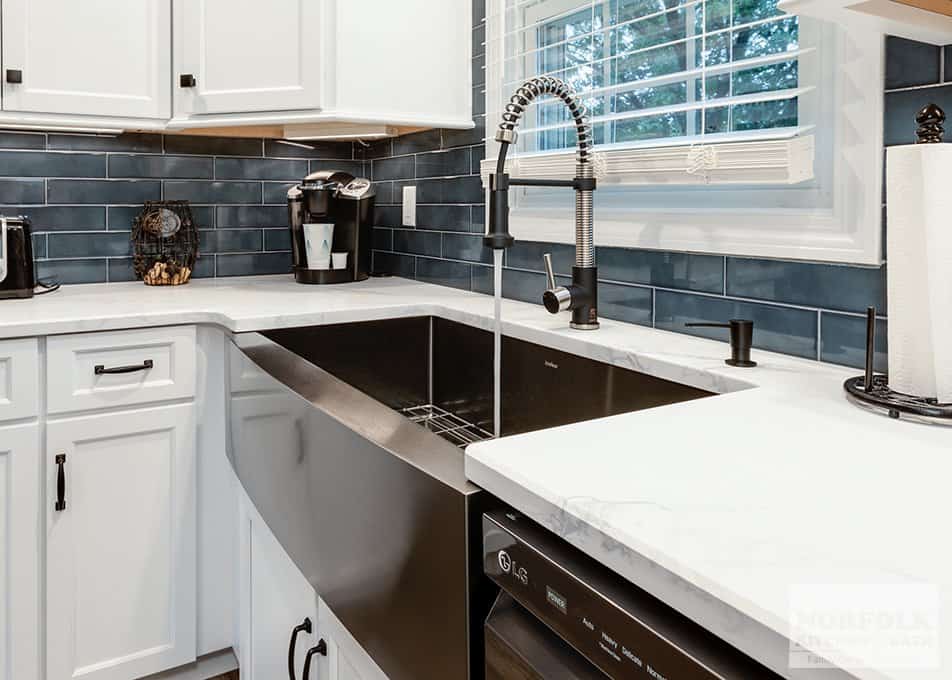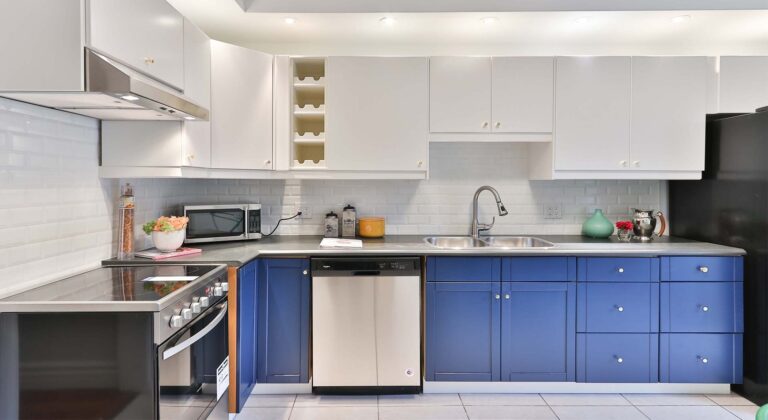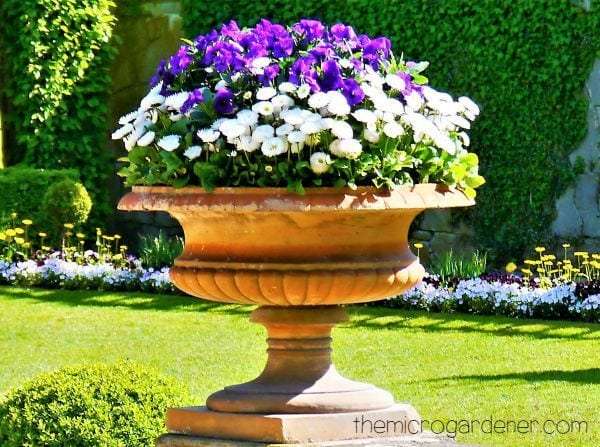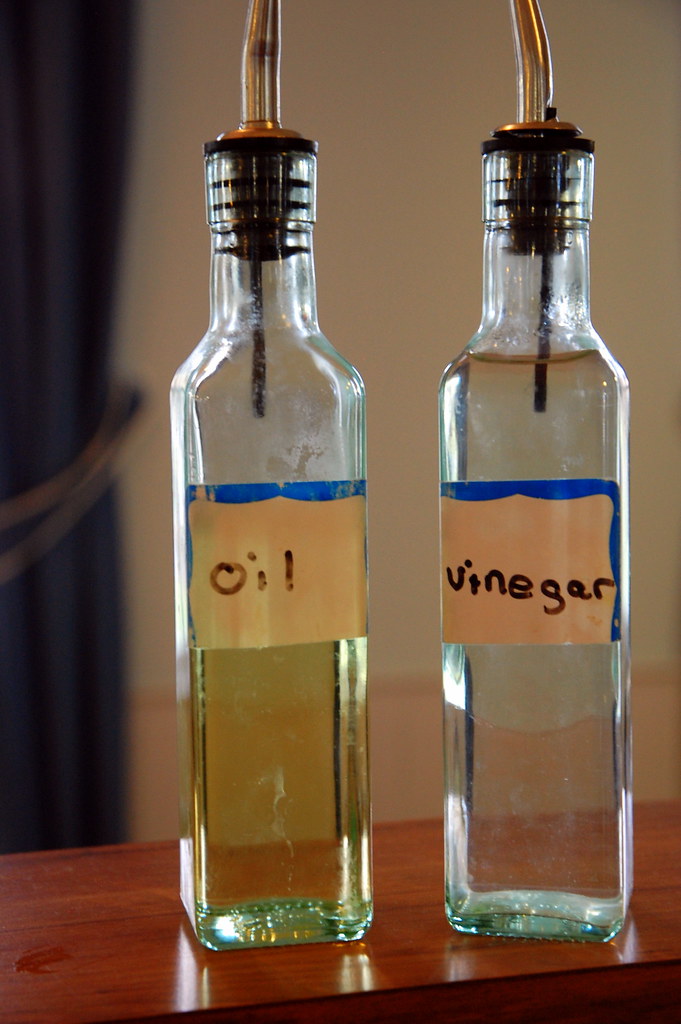Is Backsplash Important In A Kitchen?
A backsplash is an important part of any kitchen. It serves both a practical and aesthetic purpose, protecting the wall from splashes of water, grease, and other liquids while also adding visual interest to the room. A backsplash can help tie together the other elements of the kitchen, such as the cabinets and countertops, and can be used to create a cohesive, stylish look. Backsplashes are available in a wide variety of materials, colors, and styles, so you can find the perfect one to match your kitchen’s decor.
Definition of a Backsplash
A backsplash is a material used to protect the walls behind sinks, counters, and other work surfaces from water, food, and other messes. Backsplashes are typically installed between the countertop and the wall, but they can also be extended up the wall and even to the ceiling. The most common types of backsplash materials are tile, stone, and glass, but other materials, such as stainless steel and laminates, are also popular.
Whether you’re renovating an old kitchen or planning a new one, a backsplash is an important element to consider. Not only is it aesthetically pleasing, but it also serves a vital functional purpose. A backsplash helps to protect your walls from water damage, grease splatters, and airborne particles. It can also be used to create a focal point in the room or add a touch of style to an otherwise plain kitchen. Installing a backsplash is also relatively easy and can be done by most DIYers with a few basic tools.
When deciding if a backsplash is right for your kitchen, consider the material it will be made from and its style. Depending on your budget, you can choose from a variety of materials that range from budget-friendly to high-end. Additionally, think about how much maintenance and upkeep the backsplash will require and if it will fit in with the overall look of your kitchen. Ultimately, deciding if a backsplash is important in your kitchen is a personal decision, but it is one that can make a big difference in the overall look and feel of the space.
Benefits of a Backsplash
Installing a backsplash in your kitchen is an easy way to add a modern look to the space. Not only does it provide a trendy design element, but there are also several practical benefits to having a backsplash. From protecting your walls from splashes and spills to adding a visual appeal to your kitchen, a kitchen backsplash can be a great addition to any kitchen.
Whether you’re looking to enhance the aesthetics of your kitchen or you’re looking for a practical solution to protect your walls from splashes and spills, a backsplash can be an ideal choice. Backsplashes can be made from a variety of materials, including glass, tile, and stone, and can be customized to fit any kitchen design. Installing a backsplash can prevent water damage to your walls, making it easier to clean up after cooking. Additionally, backsplashes can add a unique style to your kitchen, while protecting your walls from everyday wear and tear.
Backsplashes also help to create an attractive focal point in your kitchen, which can help to draw the eye and create a cohesive design. Whether you choose a classic tile backsplash or a modern glass panel design, the options are endless when it comes to creating a one-of-a-kind look in your kitchen. A backsplash is a great way to tie the entire design of your kitchen together, making it the perfect finishing touch.
From protecting your walls from everyday wear and tear to adding a unique visual element to your kitchen, the benefits of a backsplash are undeniable. By installing a backsplash in your kitchen, you can easily create a modern look and protect your walls from splashes and spills.
Types of Backsplashes
The kitchen backsplash is an important part of any cooking area. Not only does it protect the walls from splatters and spills, but it can also be a decorative element that adds to the overall aesthetic of the room. There are numerous types of backsplashes to choose from, each one offering a different look and function. From glass tiles to stainless steel, there’s something for every kitchen.
Glass tiles are one of the most popular options for backsplashes. They come in a variety of colors, sizes, and textures, making it easy to create a unique look. Glass tiles are also easy to clean and maintain, making them a great option for busy kitchens.
Stainless steel is another popular choice for backsplashes. This material is durable, easy to maintain, and provides a modern look. It can also be cut into a variety of shapes, which adds to its appeal.
Stone backsplashes are also popular because they come in a wide range of colors, textures, and styles. They are also highly resistant to stains and can be cut to fit any space.
Ceramic tiles are another great option for backsplashes. They come in a variety of colors and designs, making it easy to create a unique look. Ceramic tiles are also durable and easy to clean, making them a great choice for busy kitchens.
No matter which type of backsplash you choose, it is important to consider how it will fit into the overall design of the kitchen. With so many options available, it’s easy to find one that will look great and provide the necessary protection.
How to Choose the Right Backsplash
When it comes to kitchen design, there are few elements as important as the backsplash. Not only does it contribute to the overall aesthetic of the space, but it also serves an important functional purpose. From protecting walls from splashes and spills, to providing an easy-to-clean surface, the right backsplash can make a huge difference. So, how do you know which backsplash is right for your kitchen? Here are a few tips to help you pick the perfect backsplash for your space.
First, consider the overall style of your kitchen. Do you prefer a modern look or something more traditional? The backsplash should complement the overall design of the room. If you have a modern kitchen, consider a sleek and contemporary tile or a stainless steel backsplash. For a more classic look, you can opt for a ceramic tile or a natural stone option.
Next, consider the size and shape of your kitchen. You’ll want to choose a backsplash that fits the space properly and won’t look too small or overwhelming. If you have a small kitchen, consider using smaller tiles or a simple pattern to elongate the space. For larger kitchens, you can opt for a bolder pattern or statement backsplash.
Finally, consider the material of the backsplash. There are many different options to choose from, including ceramic, stone, glass, and metal. Each material has its own unique look and feel, so take the time to explore all the options to determine which one is best for your kitchen.
Choosing the right backsplash for your kitchen can be a daunting task, but by taking the time to consider the style, size, and material of the backsplash, you can find the perfect option for your space. With the right backsplash, your kitchen can be transformed into a beautiful and functional space.
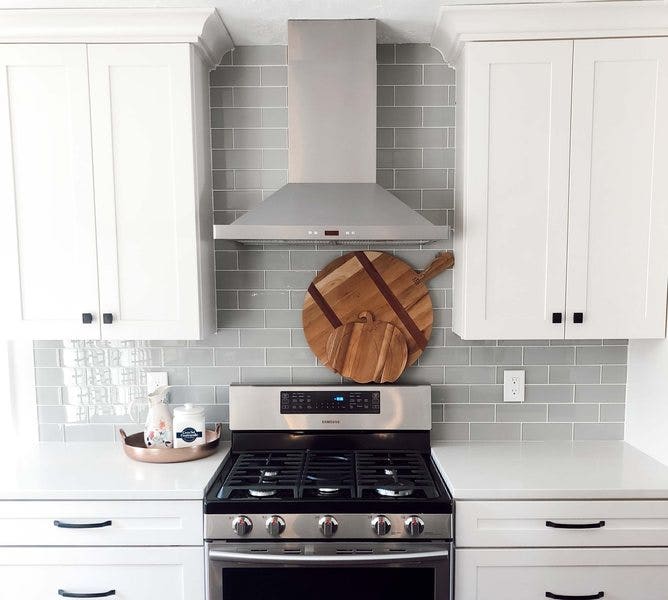
Installation Tips for a Backsplash
When considering a kitchen renovation, an often overlooked but important part of the design process is installing a backsplash. Whether you’re looking to install a backsplash as part of a new kitchen or are just looking to update your existing one, it’s important to understand the basics of backsplash installation to ensure the job is done right.
One of the most important aspects of backsplash installation is selecting the right material. Backsplashes come in a wide variety of materials, from ceramic tile to glass to stone. Each material has unique properties that make it more suitable for certain types of kitchens. For example, glass tile is ideal for modern kitchens, while stone is better suited for a more traditional look.
Once you’ve selected the material, it’s time to start the installation process. This typically begins with measuring the area where the backsplash will be placed and cutting the tiles or panels to size. After the material is cut, it’s time to apply the adhesive and start securing the material to the wall. Once the adhesive has dried, it’s time to grout the tiles and complete the installation process.
Installing a backsplash can be a daunting task, but with the right materials, tools, and a little bit of patience, you can achieve a professional-looking result and add a touch of style to your kitchen.
Maintenance and Cleaning of a Backsplash
Backsplashes are an important part of any kitchen. They can add an aesthetic appeal and help protect the wall behind your countertop from splashes or spills. But they also require regular maintenance and cleaning to keep them looking their best. To ensure your backsplash remains in tip-top shape, it’s important to know the basics of cleaning and maintenance.
First, it’s important to understand what type of material your backsplash is made of. Different materials require different cleaning products and techniques. For example, if you have a tile backsplash, you’ll want to use a mild detergent and warm water to clean it. If your backsplash is made of stainless steel, you’ll need to use a stainless steel cleaner and a soft cloth to avoid scratches.
Once you’ve identified the material your backsplash is made of, you can begin to clean it. Start by wiping down any loose dirt or debris with a damp cloth. For tougher stains, use a commercial cleaner that’s specifically designed for the material of your backsplash. Be sure to follow the instructions on the package and avoid using any harsh or abrasive cleaners.
Once your backsplash is clean, you can protect it from future damage by applying a sealant. This will help to keep dirt, oil, and other spills from penetrating the material and staining it. A sealant should be applied every few months or so, depending on how often your backsplash is exposed to moisture.
Cleaning and maintaining your backsplash is essential for keeping it looking its best. By following the tips above, you can ensure that your backsplash remains in top condition for many years to come.
Cost Considerations for a Backsplash
The cost of adding a backsplash to your kitchen can vary widely depending on the materials you choose. Ceramic tile is one of the most popular and cost-effective options, but you can also opt for more expensive materials such as glass or marble. It’s also important to consider the labour costs of installing the backsplash, as this can add to the overall cost. For example, if you are installing the backsplash yourself, you may need to purchase tools and supplies, and if you are hiring a professional, you may need to factor in their labour fees. Additionally, some materials may require more time or special tools than others, resulting in higher labour costs. Ultimately, the cost of your backsplash will depend on the material, installation methods, and labour costs, so it’s important to research the options available to you and get quotes from professionals before making a decision.
Popular Backsplash Design Trends
A kitchen backsplash can be a great way to express your individual style and add visual interest to your cooking space. Whether you are looking for a classic, traditional look or something more modern, there are many popular backsplash design trends to choose from. Subway tiles, mosaics, and natural stone are just a few of the most popular materials used for backsplashes. Each of these can be used in a variety of ways to create unique and eye-catching designs.
Subway tiles are a classic choice for backsplashes, but they can also be used to create a more contemporary look. Mosaics can also be used to create a unique and eye-catching backsplash. Natural stone, such as marble, granite, and travertine, can be used to create a beautiful and timeless backsplash.
Another popular trend is using glass tiles to create a backsplash. Glass tiles come in a variety of colors, shapes, and sizes and can be used to create a stunning and unique look. Additionally, metal tiles can be used to add a modern touch to a kitchen. Metal tiles come in a variety of finishes and can be used to create a one-of-a-kind backsplash.
No matter what type of backsplash you choose, it’s important to consider how it will fit into your overall kitchen design. Backsplashes are an important part of any kitchen and can make a big impact on the overall look and feel of the space. Whether you are looking for a classic, traditional look or something more modern, there are many popular backsplash design trends to choose from.
FAQs About the Is Backsplash Important In A Kitchen?
Q: What is a backsplash?
A: A backsplash is a protective covering that is installed behind a countertop to protect the walls from splashes and spills.
Q: Why is a backsplash important in a kitchen?
A: A backsplash is important in a kitchen because it helps protect the walls from moisture, dirt, and grease. It also adds a decorative touch to any kitchen.
Q: How can I choose the right backsplash for my kitchen?
A: When selecting a backsplash for your kitchen, consider the overall design of the room, as well as your budget. Consider materials that are easy to clean and maintain, such as ceramic tile or stainless steel. Additionally, think about how the backsplash will complement the countertop and other elements in the kitchen.
Conclusion
In conclusion, a backsplash in a kitchen is important for both aesthetic and practical reasons. Not only does it add decorative flair to the space, it also serves an important functional purpose in protecting the wall behind the countertop from water and food splashes. With so many different styles, colors, and materials to choose from, backsplashes can be used to add a unique and personal touch to any kitchen.
